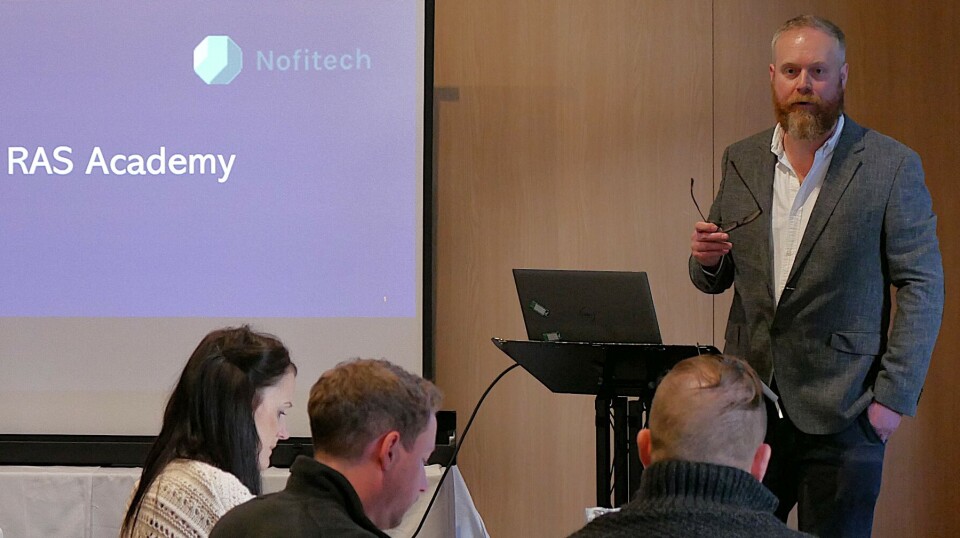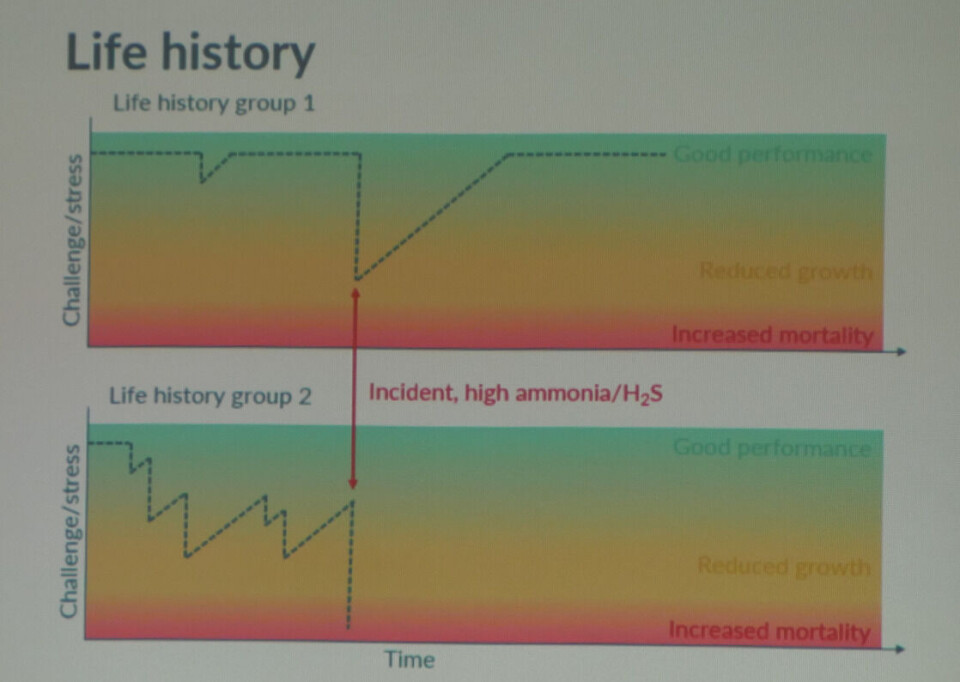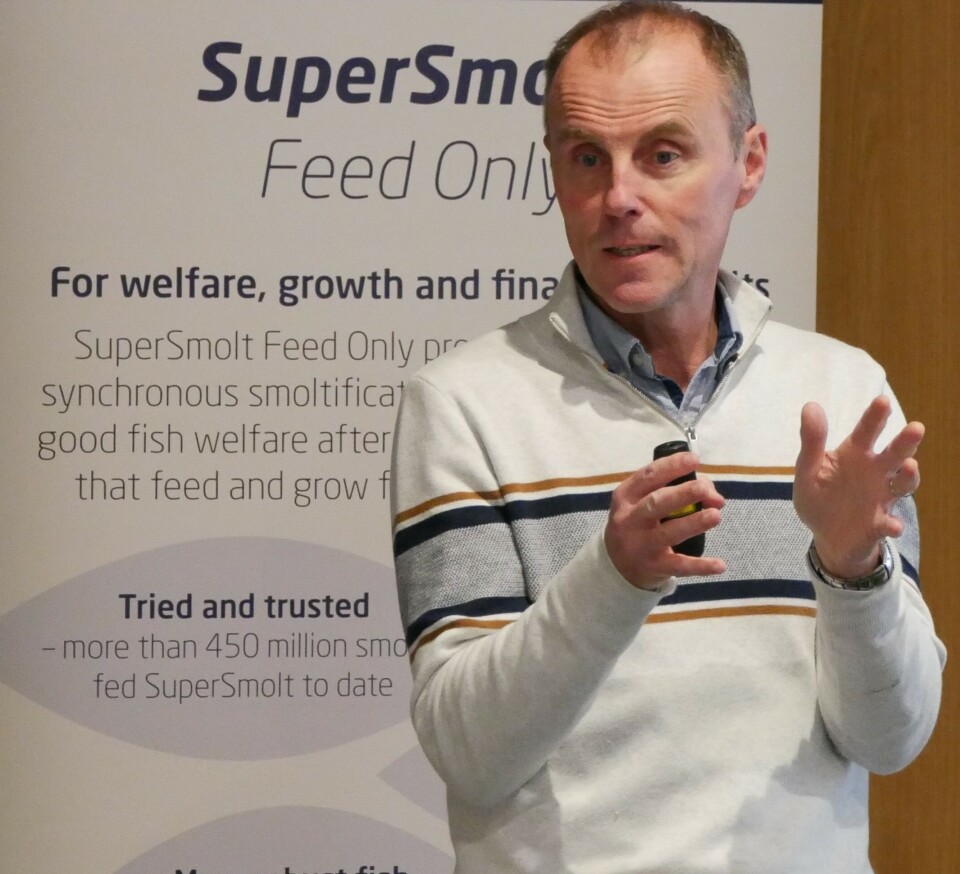
To be clear, water chemistry is a constantly changing challenge
RAS offer many advantages for fish farmers but keeping the environment optimal requires vigilance
The constant vigilance required to keep water at optimum quality in recirculating aquaculture systems (RAS) has been emphasised to Scottish fish farmers at an event held in Inverness.
Salmon and trout farmers attending the STIM RAS Technical Academy last week also heard how freshwater variables such as alkalinity and hardness can impact growth and fish health.
STIM also outlined the advantages of using its SuperSmolt Feed Only product that keeps smolts from desmoltifying, used as a safeguard if fish farmers are unable to put them to sea within a narrow “smolt window”.
The Academy opened with a welcome from STIM’s UK and Ireland chief operating officer Justin Watson, who said “the importance of water quality cannot be overemphasised” and that water quality is at the core of a preventative fish health management approach.
He was followed by Kari Johanne Kihle Attramadal, head of R&D for Norwegian RAS expert Nofitech, which is supplying technology for Bakkafrost Scotland’s RAS facility at Applecross that will produce 10 million smolts a year with an average weight of 500 grams.
A changing environment
Attramadal said that although fish can tolerate variations in water quality in RAS, her focus was on ensuring optimal conditions. “At that level, fish can use most of their energy for growing and not to compensate for stressors.”
Achieving and maintaining optimal water quality is not easy, as the RAS is constantly changing, said Attramadal, and there are competing requirements. For example, a high pH level means more toxic ammonia, but if pH is below 7 the biofilter stops working, as the bacteria converting ammonia need alkalinity.

Life history of the fish must be considered, as an incidence of sub-optimal conditions can kill fish that have been recently challenged and have less energy than others because of it. “That is why one fish group can survive a challenge, and another won’t,” said Attramadal.
Nofitech’s Trond Hansen then explained how the company’s Mime model-based control system, named after the wisest of Norse gods, can help provide RAS operating personnel with the best information for decision making.
Mime, which can be used with any supplier’s RAS, is based around Nofitech’s sensors and biosecure measuring station which can fetch water from several RAS units.
Impact on gills
Professor Rod Wilson, an aquatic animal physiologist from the University of Exeter, then talked about the influence of water quality and diet in salmonid RAS.

Wilson said components in the water have a direct and immediate impact on gill function. Calcium, for example, influences what goes through the gills, including pathogens.
He added that carbon dioxide is elevated in RAS, which typically reduces growth and increases feed conversion ratio, although it was not always so simple.
Jack Jarvis, a PhD student at Exeter who also has experience as a trout farmer in freshwater farms, spoke about the influence of water chemistry on fish.
He said the UK government has predicted that by 2050 the country could have a public water supply deficit of 5 billion litres per day, therefore due to supply reduction farmers may be forced to either partially or fully recirculate their systems either all year round or at certain times of the year.
River sources
Jarvis has surveyed trout farmers to collect information on any existing water chemistry data they might have.
“From 25 responses we saw that water was mainly extracted from river sources, and that the UK trout sector is mainly characterised by flow-through systems,” he added. “The data also show that very few are using partial RAS and even fewer are using full RAS systems.”
Fresh water isn’t one thing, it’s very variable, it’s dictated mainly by geology. You’re seeing pH balances from five up to eight, you’re seeing alkalinity varying by 25-fold, and calcium by just over 100-fold.
Jarvis visited and sampled water at 32 trout farms, with broad results.
“Fresh water isn’t one thing, it’s very variable, it’s dictated mainly by geology. You’re seeing pH balances from five up to eight, you’re seeing alkalinity varying by 25-fold, and calcium by just over 100-fold.”
CO2 and kidney stones
As also mentioned by Wilson, Jarvis said there seemed to by an association with high CO2 and nephrocalcinosis (kidney stones) although scientists don’t know exactly how this produces the stones.
“There are other factors that have been associated with nephrocalcinosis. Firstly, there is hyperoxia, where oxygen levels are above 100% saturation; this causes a decreased ventilation of the gills so the fish are unable to get rid of as much CO2.
“Another factor is early seawater supplementation, as this can cause osmotic stress, and this is worsened at lower temperatures.”
He added that a recent study saw that during early seawater supplementation the fish has a chronic elevation of both calcium and magnesium in the blood which may promote precipitates in the kidney. There may also be a dietary component to nephrocalcinosis.